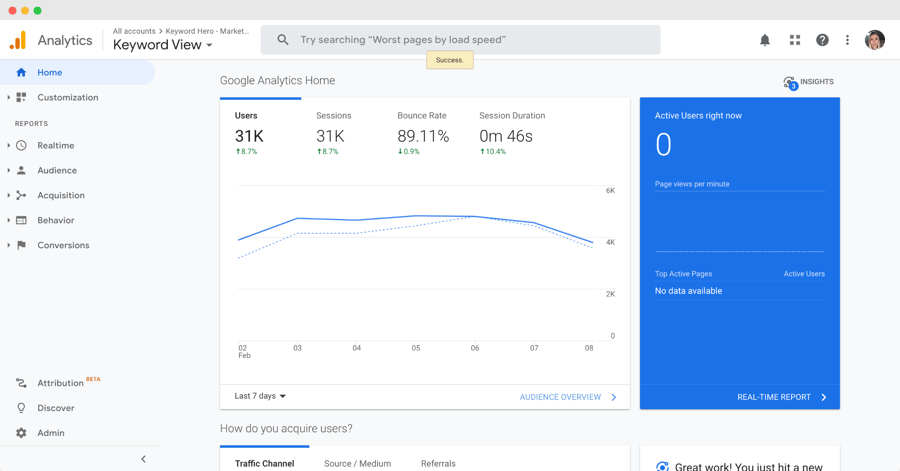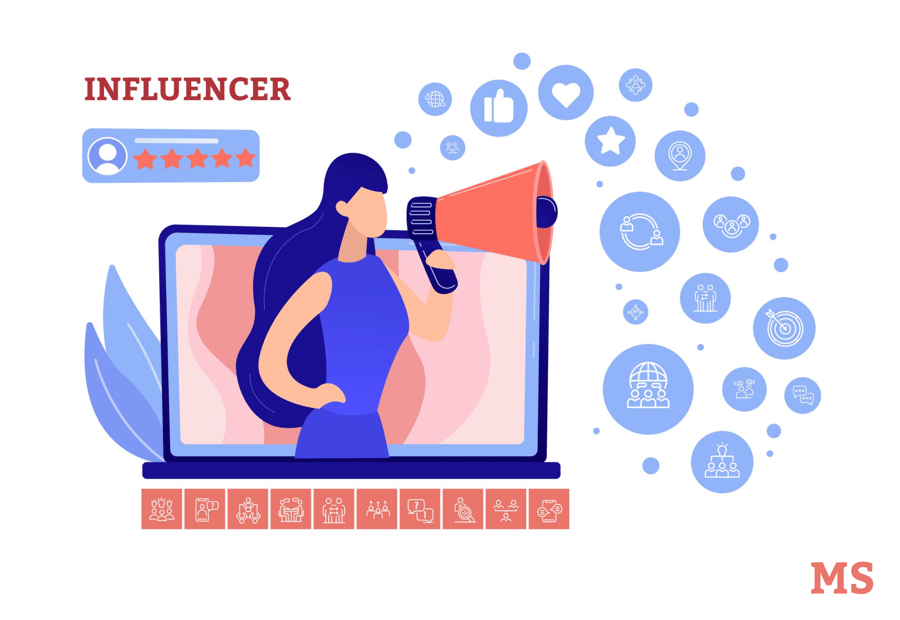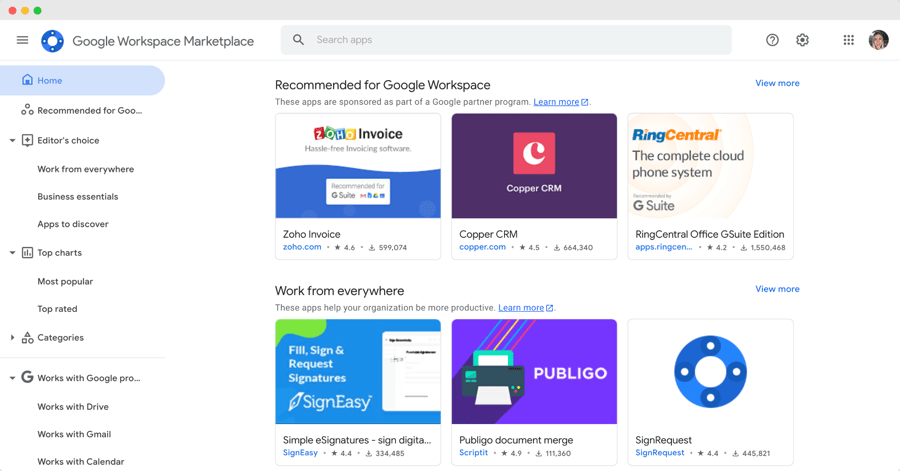
One tongue-in-cheek measure of success that Silicon Valley executives have mentioned a few times is the ability to have your company name turned into a verb. How often do we say "just Google it?"
That is how ubiquitous Google's search engine has become in our lives.
In this quid pro quo arrangement, we (Google's users) have reaped the benefits of a well-optimized search engine.
We use it for a broad spectrum of queries: both mundane, like asking about the day's weather, and professional, like troubleshooting problems you're having with your spreadsheets at the office.
Over the last two decades of this exchange, Google has, in turn, built a massive database knowing what we think about, when we think about it, and how we think about it.
The technology is still growing, and in this article, we will examine Google's influence and the future of search engines and eCommerce in the digital age.
What Is the Digital Age?
The personal computer heralded the emergence of the digital age. Once engineers mastered the use of transistors and integrated circuit chips for computer processors, we were off to the races!
The first mass-produced commercially viable home computer was the Apple II, manufactured by Apple and introduced in April 1977.
Coinciding with this explosion in personal computer units for the home was their use in other areas, such as video gaming, automated teller machines, and film production.
Seeing computers in our everyday lives normalized it to the public — the age of the digital computer was upon us.
The proliferation of computer technology in the home laid the foundation for the mass adoption of the internet, which became publicly accessible in 1991.
The Rise of Google
Google's search engine went online in the late 90s and became better than its predecessors as the years passed. The secret was in its algorithm, which indexes all websites and crawls through their content to understand their purpose.
By the year 2000, Google had 9 million users, and as the search engine grew in popularity, new opportunities arose for the company to make money.
In one of the first forms of digital marketing, Google started offering companies the chance to pay to have their website listed among the first search results for a particular domain or topic.
By 2004, the search engine was processing more than 200 million queries from users every day.
More users meant more leverage for the company, and as the mid-to-late 2000s came around, Google was poised to change marketing science forever through targeted advertising.
By the time social media platforms like Facebook and Twitter were gaining popularity, Google was already tracking users beyond the walls of its search engine.
Google Analytics
Google introduced Google Analytics to help websites as prominent as international organizations and as small as blog post publishers to assess their site visitors.

Source: Google Analytics
The tool enabled website owners to see who was new, who wasn't, and where these visitors came from on the internet. Because Google had records of each user's activity, they could build profiles on each one.
As social media users erupted in numbers, the web search giant became the perfect consumer research organization.
Users would view content on social media platforms but still get served with marketing messages based on products outside these platforms.
Google could sell you the perfect product while ignoring items that you were less likely to buy.
We are now firmly in the information age. Data is the new oil in this age due to its unfathomable value.
Data Collection and AI
One major game-changer when looking at Google's use of consumer data in the past vs. the present is the use of artificial intelligence (AI). And it has far-reaching effects where Google's monthly active user numbers have hit one billion!
In this context, these incredibly extensive datasets that Google has been collecting on its users have been combined with computer science techniques to allow artificial intelligence software to predict user behavior.
Artificial Intelligence systems might know us better than we know ourselves.
For instance, a few years ago, two users with two completely different sets of interests and personalities would probably get the same result from Google's search engine upon searching the word "warriors."
Today, if the same two users search for that same word, the AI recommendation system already has information on these users' interests. One user may get the traditional definition of the word warrior, which is a brave or experienced fighter.
If the other user is a sports fan, the AI already knows it and will present the Golden State Warriors basketball team.
Extending the same analogy to an eCommerce environment, the artificial intelligence responsible for eCommerce advertisements can do A/B testing.
Google Ads can show two different images to two users for the same product on the same social media platform based on their interests. It can figure out which ad is more relevant to you.
This is in part due to all the intricate ways data is collected such as personality quizzes, tracking behavior across other applications, etc.
The Latest eCommerce and Search Trends
Apart from AI, the digital landscape is changing a lot. Let’s dive into the latest eCommerce and search trends to watch out for.
Direct to Consumer (DTC)
Try and think back to the retail process in the early 2000s. If the sneaker giants Nike and Adidas wanted to sell their products, they would ship them to smaller distributors to supply retailers in specific regions.
Customers could go and buy their shoes from those local retail stores. Companies spent millions of dollars on advertising campaigns on TV and radio in the process.
Now come to the present and think about how this process changed. Companies can cut out the distributors and retailers by having their internal advertising departments display internet ads in the targeted nature discussed before.
The precision is now surgical as advertisers don't have to wonder if their target demographic saw a specific billboard or heard a particular radio ad. That is the very definition of direct-to-consumer sales.
Significant Increase in New Retention Strategies
Lifetime value or LTV is one of the most vital eCommerce metrics because it ensures the longevity of customer-facing brands.
As a brand, you do not want your users to buy your products for a single season or a single year and then move on. You should find strategies to have them come back again and again and again.
LTV helped popularize the importance of "market share," whereby brands in the past may have chosen to forgo immediate profits as long as they had the majority of customers buying their products over the years and not their competitors.
In this new age of social media, these strategies changed. Focus is shifting away from LTV and more towards immediate retention. Social media users get bombarded with information as they spend most of their lives online.
As this is happening, their attention spans are also decreasing significantly as social media and the internet weave themselves into the very fabric of our everyday lives.
Ecommerce stores and brands are now utilizing user data collected from both Google and social media platforms.
Once the brand understands what their users are doing online and where they go after visiting the brand's website, they can implement strategies that add value to the user.
For example, they might offer immediate discounts after one purchase to encourage visitors to browse their inventory and make subsequent purchases.
If they notice that a user tends to shop for a particular item after leaving the brand's website, they can strategize to include that product category in their online store. This is the kind of strategies that many eCommerce SEO agencies use nowadays.
Instead of the traditional lifetime value, these companies are looking at much shorter cycles of 60, 90, or 120 days and trying to maximize repeat purchases within this timeframe.
Whereas market share may have been the Holy Grail before the social media age, now there is an emphasis on immediate profits.
Direct Sales Engagement on Social Media Platforms
In mid-2021, Adam Mosseri (Head of Instagram) famously declared that Instagram is no longer a photo-sharing app. The declaration caused an uproar, and understandably so because Instagram's claim to fame was their photos feature.
The company stated that they were emphasizing their eCommerce features and video content.
As you study the trend in internet user behavior, it makes sense why one of the world's largest social media platforms made this change. It is more profitable to target users where they are.
Remember, these users have increasingly short attention spans, so it makes sense to make their purchasing process as seamless as possible while ensuring that they do not leave your platform.
Today, nearly every major social media platform allows videos or images of a product to be clicked on and lead to the manufacturer or the brand's page on the same platform. Also, users can add payment details and complete the order on the same platform.
The Rise of Influencer Marketing
Targeted advertising may have been a genius concept and clever use of artificial intelligence systems. However, it came with some drawbacks, one of which was the cockroach-like pervasiveness of these ads.
Ecommerce brands overdid the advertising, and it was all users would see while online.
Some blogs and lower-level sites got so ridiculous that the marketing messages on a web page took up a more significant percentage of the screen than the actual content the user was there to see.
As a result, ad-blocking software emerged, which hurt the advertisers.
Enter the influencer era, which introduced the idea behind influencer marketing. An influencer is an online personality who creates content and shares it with followers online. Their content typically gives a glimpse into their everyday lives for fans that admire them and want to see more.

Source: MarketSplash
Advertisers soon discovered that using these personalities is the perfect way to push their products onto their intended buyers. Due to the illusion of a close link, buyers were more likely to buy whatever product the influencer was advertising without asking too many questions.
The strategy works on two fronts, the first being trust. A friend wouldn't lead you astray, would they? That's the sense of security they feel when buying products endorsed by the influencer.
The second is the fan's desire to be more like the influencer, which means buying and using the same products they see the influencer using.
Reality TV star Kim Kardashian built billion-dollar empires on this very premise. In 2015, she leveraged her 44 million social media followers and converted them into users for her new emoji app (aptly named Kimoji).
On the first day of release, the $1.99 app had 9,000 downloads a second, making her one million dollars every minute! This paradigm shift in eCommerce is only made possible by the rise of social media.
Voice Search
Improvements in artificial intelligence have led to the rise of digital assistants. It is common to find digital assistants in GPS devices in your car, phone, TV, and speakers.
Smart devices take advantage of cloud storage and processing to respond to particular prompts you set for them, listen to your query, break it down using natural language processing (a field of AI), and provide an appropriate response.
Google has seen a significant rise in voice search queries. As of 2021, 20% of search queries come through voice search, and that number will only increase in the coming years.
10 Google Predictions for Brands in 2022
Here's what your business can expect to see from Google in the coming year.
1. Creative Advertising for Google Ads Is Key
Brands using Google Ads will have to adapt to the new story-driven advertising landscape.
Marketing campaigns and current digital and graphic design trends that are carefully curated for use with Google Ads will need to hold the users' attention. They need to connect and compel the user to follow the brand or advertiser’s directions.
Brand identity optimization will be crucial, just as much as the reach of ads has been in the past.
2. Responsive Search Ads
The advent of artificial intelligence has made it possible to live-test the effectiveness of multiple versions of advertisements. These tests are near-instantaneous and overseen by an entity that is way more accurate than humans.
As such, it only makes sense that Google ads adapt to different users' preferences. Brands will no longer be able to upload simple text ads.
The new requirement will call for multiple headlines and descriptions so that the algorithms can test different combinations to find out what works best for your brand and your intended clients.
3. Integrated Mobile Strategies for Google Reviews
In 2021, 54% of worldwide internet traffic came from mobile devices. Because reviews are an integral part of the eCommerce process for buyers, brands will need to find ways to optimize reviews about their products or services for presentation on mobile devices.
4. Automated Ad Solutions
In addition to using machine learning to determine which version of an ad gets displayed, Google will use similar techniques to determine where an ad gets displayed.
The advertiser will only have to provide content for the specific advertisement.
Google's automated recommender systems will decide where to place these ads within the Google ecosystem.
It may be more appropriate, for example, to display a particular kind of ad as a text banner in the Gmail window versus a visual banner on YouTube.
5. Increased Privacy Restrictions
Google has been and will continue to place restrictions on the amount of third-party data that websites can collect using Google tools.
There will be a reduction in cross-website tracking, and a shift will emerge where brands will now need to optimize their website for first-party data collection.
Google will gather the data as the user actively browses the website, and this is the kind of data with minimal collection restrictions.
Sharing of this data might still, however, be restricted to data clean rooms and subject to local laws. As an overall trend, privacy restrictions are likely to increase.
6. Relevance Over Reach
Once again, the short attention spans of social media users and the sheer number of marketing materials presented to them come into focus.
It is not enough to carpet-bomb users with advertisements containing links to your page.
Authenticity is crucial. A value proposition needs to be made immediately and understood by the user so they engage with your brand online.
7. Increased Number of Google Integrations
Similar to the big social media platforms, smaller brands and business owners will need to integrate with tools on their apps and websites to make seamless purchases.
Because Google handles much of the analytics for these sites on the internet, they are in the perfect place to provide these integration methods. That's where the Google Workspace Marketplace comes in.

Image Source: Google Workspace
8. A More Shoppable Google Platform
As social media platforms become more shoppable, Google will want the same for itself.
The company can use it’s mountains of consumer information that they already have to predict behavior and prevent users from going to search for products on rival platforms in the first place.
It is a viable strategy to regain dominance in the search space, which has gone to competitors like Instagram. With Google Shopping already at their disposal, they’re in a prime position to capitalize on this trend.
9. Digital Sovereignty Over Data
The modern internet user is technology savvy. They are aware of the harm done by the targeted advertising explosion over the past few years and are now demanding control over their data.
Due to this transparency demand, companies like Google will most likely shift to more open-source standards that allow easier auditing and public participation.
10. Google Analytics and Google Cloud Will Become Increasingly Used
Sustainability takes center stage in most if not all industries today. It was mainly in the manufacturing and hardware industries, but there is an increased focus on sustainability in the tech space.
The effect of on-premises servers on energy consumption and waste is well-documented.
Migration to an optimized cloud service such as that provided by Google would be ideal considering its commendable efforts to run all its infrastructure on clean energy.
Google Cloud and Analytics will see an increase in active users as organizations big and small rush to minimize their carbon footprint.
Wrapping Up
We live in such a fascinating time, and we can barely keep up with the technological advancements in search and eCommerce. Everything you think you know may as well be obsolete in two years.
One encouraging thing is that we should see a net positive as far as user wellbeing is concerned. All in all, you can bet on the future of eCommerce and emerging technologies like the Metaverse to improve how we shop online in the coming years.





Leave a reply or comment below